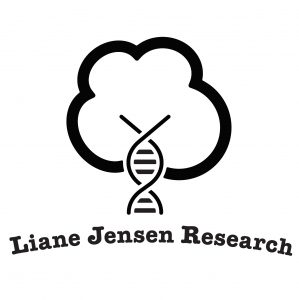So you took an autosomal DNA test, and have pages and pages of matches. Are all of them family? The answer is no. Some will be false positives, matching your DNA by chance rather than because you are related. How can you tell? Blaine Bettinger, who brought us the awesome DNA cM relationship chart I wrote about in DNA Statistics, Average and Range of Shared DNA for Various Relationships, has done another great analysis project to help us tell which matches are really family.
Blaine compared his matches to those of both of his parents. The matches that he has that neither parent has are false positives. He wrote up his results in blog post The Danger of Distant Matches . His results, using AncestryDNA data and the DNAgedcom Match-O-Match tool:
- Above 15 cM, a match is 99.3% likely to be a real match, a match shared with either or both parents
- Above 10 cM, a match is 94% likely to be a match shared with either or both parents (This statistic includes the range above 15 cM.)
- Below 10 cM, a match is 59% likely to be a match shared with either or both parents
- Below 7cM, a match is 40% likely to be a match shared with either or both parents, so more likely to be a false positive, not really family
This is great data. Another analysis I have seen on this topic is found in a Tim Janzen lecture called “Chromosome Matching” referenced on the ISOGG Wiki page on Chromosome Mapping. (See the link to his Powerpoint slides in the Methodology section.) In it (see slide 19) he cites an analysis by John Walden with these statistics:
- 11 cM or greater matching segment: > 99% identical by descent (IBD), < 1% identical by state (IBS)
- 10 cM matching segment: 99% IBD, 1% IBS
- 9 cM matching segment: 80% IBD, 20% IBS
- 8 cM matching segment: 50% IBD, 50% IBS
- 7 cM matching segment: 30% IBD, 70% IBS
- 6 cM matching segment: 20% IBD, 80% IBS
- 5 cM matching segment: 5% IBD, 95% IBS
- 4 cM matching segment: ~1% IBD, ~99% IBS
In general both studies suggest setting a threshold somewhere around 15 to 10 cM as a lower bound for almost certainly good matches. Below that, buyer beware. If through using matches in common with each other, one of these smaller matches looks to be real, great. But don’t let them throw your research off course. They may not actually be family.


[…] Also a shared DNA amount of 10 cM and greater is often considered quite reliable already. With an estimated IBD probability higher than 50%, unlike what is stated in table 3. During my survey I mostly came […]
LikeLike
[…] Also a shared DNA amount of 10 cM and greater is often considered quite reliable already. With an estimated IBD probability higher than 50%, unlike what is stated in table 1.1. However during my survey I […]
LikeLike